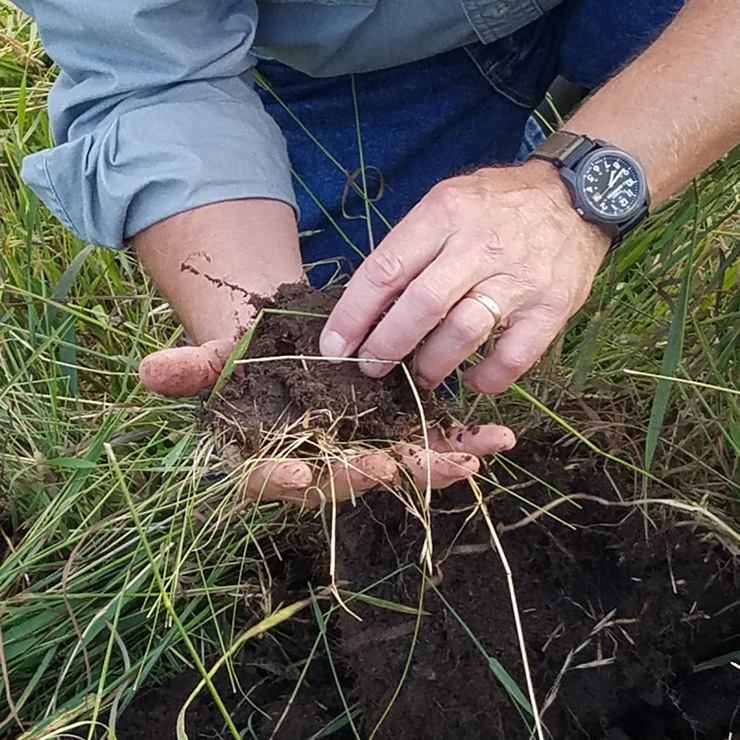A Living Room for Soil Biology? Part II

By Jonathan Kilpatrick, Soil Health Specialist
Read Part I of this series here.
So, what does the root system of a living plant accomplish for us?
In short, the root system of a plant is a phenomenal communications, sales and marketing, shipping and handling service all wrapped into one full-service entity. Not many corporations can do this with the efficiency that a plant can.
The Process
Through photosynthesis, the plant takes the energy from the sun and carbon dioxide from the atmosphere and produces carbohydrates, some of which it pumps down into its roots. The roots in turn pump (or exude) this sugary substance called root exudate into the surrounding soil. This root exudate is what the fungi feed on, which in turn brings valuable nutrients to the plant from regions of the soil that the roots of the plant can’t and don’t reach. The formation of carbohydrates in the plant and subsequent “sharing” of a portion of those carbohydrates with soil biology is a critical part of the carbon cycle.
What role do these fungi play (arbuscular mycorrhizal fungus, to be exact)? This fungus produces a sticky substance called glomalin which binds the soil aggregate together. Aggregation is what creates room for air and water to flow into the soil structure. And, for the subaquatic form of soil biology such as protozoa and nematodes, the ability to move around. Water has often been called the most limiting nutrient of all, and air is essential for living microorganisms.

So, increasing the soil’s ability to take in and hold water and air enables more resilient farms. Our goal as farmers and ranchers should be to build more soil aggregate. This is how we provide that living room for biology. Without that living root, it won’t happen.
While this is a short synopsis of a highly complex subject that we are still uncovering new depths of, hopefully it has shown you the importance of that living root and creating a living room for necessary biology. Without that photosynthetic process feeding the soil biology, we have no life in our soils, and thus the soil doesn’t function as it was designed to. We must create a living room for these microbes to live and work.
The power of a living root
I firmly believe that once we fully understand the power of keeping a living root in our soil for as many days of the year as possible (365 would be great), we will be pulling no-till seed drills planting cover crops behind our combines as we harvest (any engineers reading this?). Can you imagine an agricultural community where we take as much pride in the number of days we have living roots growing in our soil as we do in our equipment line-up or a new pick-up truck? A future where we will all be thinking about what kind of “furniture” our biology needs in their living room.
‘Til next time, what kind of furniture are you going to put in that living room?!


I’m really enjoying the soil biology series. Jonathan is doing a great job simplifying a very complex relationship between plants and soil microorganisms.
[…] start of all of this is a plant’s root system. We’ll get to that part in Part II – what’s a living root got to do with […]